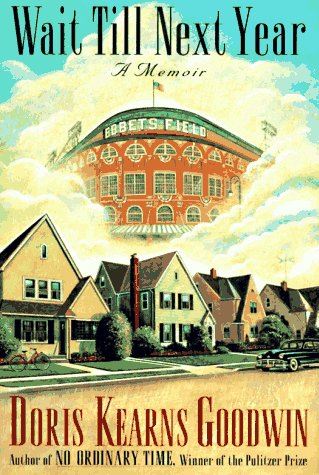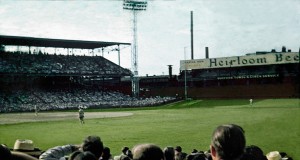What could be better than a film based on baseball and history?
I know, I know. I am out of the mainstream here, since “42” is currently in 16th place for top grossing films of 2013.
I guess I am rather weird because I don’t get all that excited by things that thrill other people. I don’t know if you will find this disappointing, but nothing explodes in “42.”
(I should point out, however, that there were twelve explosions in the 2 ½ previews that I saw before the film began. Hollywood is amazing: how do you manage to work an explosion into a preview of “The Great Gatsby?” Watch carefully. These are clever people.)
But “42” is a film you should see.
The film tells the story of Jackie Robinson’s first two years of professional baseball when he became the first African American to play in the major leagues since the 1890s. It was a momentous development for baseball and for American society.
(My wife said that a student in her class was disappointed that this film turned out to be a lot about race and not enough about baseball. Poor guy. He probably likes films with lots of explosions, too. I’m hoping that when he gets older he’ll understand the world a bit better.)
As this teenager discovered, “42” is about race in American history, with themes that I’ll hit in my next blog. For now, let’s talk baseball.
If you are one of those poor, confused souls who thinks that baseball is boring, you should pay attention to the scene where Robinson takes his first at bat in spring training against his fellow white ball players on the Dodgers. Let’s just say that there is nothing boring about a baseball flying in at your head at 90 mph. More to point, I know of no other film that does a better job of capturing the mental battle that take place between a pitcher and catcher in each at bat. Of course, we are drawn into this battle in the film because of the momentous racial context that this athletic moment represents. But let me point out that in games without this racial drama, a similar battle still takes place in every at bat. The same scene wonderfully demonstrates the mental pressure that Robinson regularly put on opposing pitchers once he got on base. It’s great baseball.
I also love the way the filmmakers established camera angles from right over the shoulder of the catcher. One not only gets a visceral sense of the speed of pitches coming in, but you see the sweeping arcs of line drives to the outfield right off the bat, as if you were the hitter yourself.
And thanks to the marvels of computer generated imagery, “42” managed to recreate the sights and spatial sense of the interiors of old ball parks. These were famous stadiums that were destroyed before I got a chance to see them: the Polo Grounds in New York, Ebbets Field in Brooklyn, and Crosley Field in Cincinnati. (It’s too bad that the film didn’t put in the four foot slope that extended up to the left field fence in Crosley Field, but I suppose that this detail would have just confused or distracted viewers).
 Finally, if you don’t understand the appeal of baseball, but are interested in having your life deeply enriched by it, (how can you not want to have your life enriched by baseball?) you should read a wonderful book by Doris Kearns Goodwin entitled Wait Till Next Year. My wife’s book club (which isn’t exactly packed with baseball fans) is reading it this summer. It’s Goodwin’s memoir about growing up in Brooklyn as a hopelessly smitten fan of the Dodgers. Her account of her first communion is worth the price of admission. It’s a wonderful account of baseball, family and history. What could be better for a summer read?
Finally, if you don’t understand the appeal of baseball, but are interested in having your life deeply enriched by it, (how can you not want to have your life enriched by baseball?) you should read a wonderful book by Doris Kearns Goodwin entitled Wait Till Next Year. My wife’s book club (which isn’t exactly packed with baseball fans) is reading it this summer. It’s Goodwin’s memoir about growing up in Brooklyn as a hopelessly smitten fan of the Dodgers. Her account of her first communion is worth the price of admission. It’s a wonderful account of baseball, family and history. What could be better for a summer read?



Pingback: “42,” History, and Race | The Circuit Reader